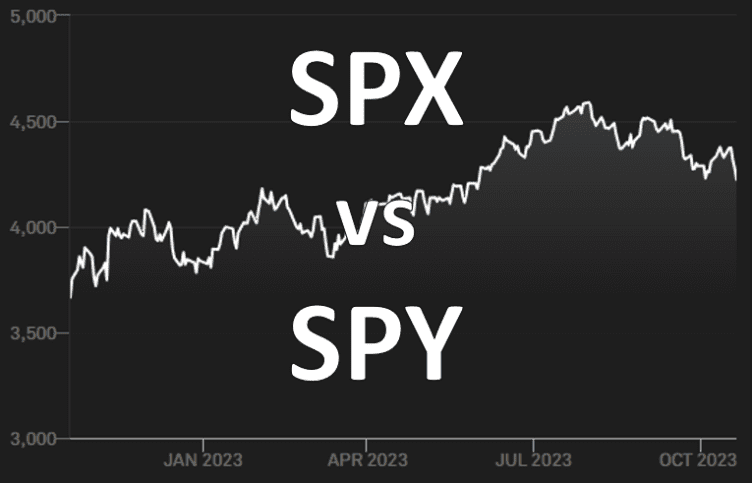Investing in ETFs has become increasingly accessible with the variety of trading platforms available today. If you’re looking to venture into the world of ETF investing, follow the steps below to learn how to buy ETFs. This guide will help you navigate the process and make informed decisions.
Before you start investing in ETFs you should get a good understanding of ETFs, how ETFs work, and why ETFs are a good investment choice
- Step 1: Choose an Investing Platform for Buying ETFs
- Step 2: Conduct Thorough Research Before You Buy ETFs
- Step 3: Determine Your Trading Strategy
- Step 4: Choose an Online Brokers or a Traditional Broker to Buy ETFs
- Step 5: Understand ETF Selection Criteria
- Examples of Popular ETFs
- Advantages and Disadvantages of ETFs
Step 1: Choose an Investing Platform for Buying ETFs
To begin investing in ETFs, you need to find a suitable investing platform. Pretty much all online platforms, retirement account providers, and investing apps like Robinhood offer access to ETFs. Many of these platforms even provide commission-free trading, eliminating the need to pay fees when you buy ETFs or sell ETFs. However, it’s important to note that commission-free trading doesn’t necessarily mean that there are no associated costs with the ETFs themselves. Each ETF has an inbuilt management fee which should be investigated.
Each platform may differ in terms of convenience, services, and the variety of available products they offer. For instance, smartphone investing apps make it easy to buy ETFs and shares with a simple tap. On the other hand, some brokerages may require investors to go through paperwork or a more complex process. Certain well-known brokerages also provide a heap of educational content to help new investors familiarize themselves with ETFs and conduct thorough research.
Step 2: Conduct Thorough Research Before You Buy ETFs
Researching ETFs is a crucial step in the investment process. ETFs come in various types and cover a wide range of sectors and industries. Unlike individual stocks or bonds, ETFs require you to consider the bigger picture in terms of sector or industry exposure.
During your research, consider the following questions:
By considering these factors, you can identify ETFs that align with your investment goals and preferences.
Step 3: Determine Your Trading Strategy
As a beginner investor in ETFs, adopting a trading strategy is essential. Dollar-cost averaging is a popular approach, involving spreading out your investment costs over a period of time. This strategy helps smooth out returns and ensures a disciplined investment approach rather than a haphazard or volatile one.
Dollar-cost averaging also allows novice investors to gain a better understanding of the nuances of ETF investing. As you become more comfortable, you can explore more sophisticated strategies such as swing trading and sector rotation.
Step 4: Choose an Online Brokers or a Traditional Broker to Buy ETFs
ETFs can be traded through both online brokers and traditional broker-dealers. Online brokers provide convenience and accessibility, while traditional brokers offer more hands-on investment services. Additionally, many retirement accounts also allow the purchase of ETFs. Robo-advisors like Betterment and Wealthfront are alternative options that heavily utilize ETFs in their investment products.
Deciding between a hands-on or passive approach to investing will help determine whether you opt for a traditional brokerage account or a robo-advisor. Robo-advisors typically include ETFs in their portfolios, although the choice of focusing on ETFs or individual stocks may not be in the hands of the investor.
Step 5: Understand ETF Selection Criteria
After creating a brokerage account, you’ll need to fund it before you can start to buy ETFs. The funding options will depend on the specific broker. Once your account is funded, you can search for ETFs and make purchases and sales similar to buying and selling stocks. To narrow down your ETF options, many brokers provide ETF screening tools. These tools allow you to filter and compare thousands of available ETFs based on specific criteria, including:
Examples of Popular ETFs
Here are some examples of popular ETFs in the market today. If you’re looking to buy ETFs, these are a good place to start:
Additionally, there are sector ETFs that focus on specific industries like oil (OIH), energy (XLE), financial services (XLF), real estate investment trusts (IYR), and biotechnology (BBH). Commodity ETFs represent various commodity markets such as gold (GLD), silver (SLV), crude oil (USO), and natural gas (UNG). Country ETFs allow investors to track foreign stock indexes, such as China (MCHI), Brazil (EWZ), Japan (EWJ), and Israel (EIS). Other ETFs cover a wide range of foreign markets, including emerging market economies (EEM) and developed market economies (EFA).
Advantages and Disadvantages of ETFs
ETFs offer several advantages, such as lower average costs due to the ability to invest in a diversified portfolio with a single transaction. This eliminates the need to buy individual stocks included in the ETF separately. Additionally, ETFs typically have lower expenses compared to actively managed funds since they aim to track an index passively.
Moreover, ETFs provide flexibility and liquidity, allowing investors to buy and sell shares throughout the trading day. Many brokers also offer no-commission trading on select low-cost ETFs, further reducing costs for investors.
However, it’s important to acknowledge the potential disadvantages of ETFs as well. ETF prices can be subject to market volatility and may not always perfectly track their underlying index due to tracking errors. Furthermore, some ETFs may lack sufficient trading volume, making it more challenging to buy ETFs at the desired prices.
ETFs can be an attractive investment option, offering diversification, flexibility, and cost efficiency. By following these steps and conducting thorough research, you can make informed decisions and embark on your ETF investing journey with confidence. Remember to assess your risk tolerance, investment goals, and seek professional advice if needed. Happy investing!



